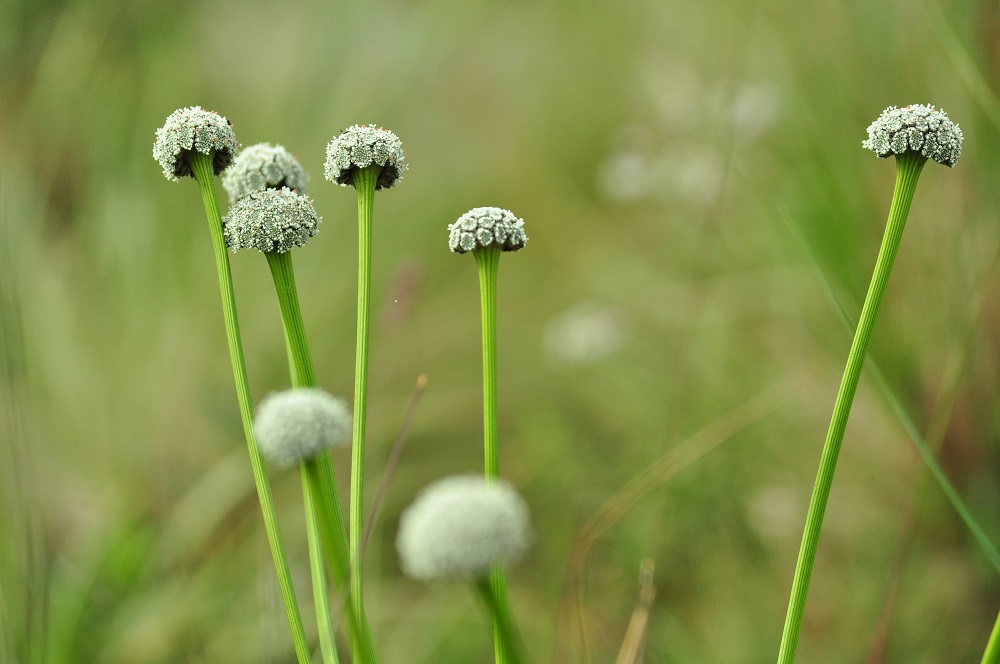2025
- Batista GS, Brocardo CR, Castro AB, Fogliatti EF, Galetti M, Pires MM , Fadini RF (2025) Defaunation disrupts the behavior of large terrestrial vertebrates impacting ecological functions in the Amazon. Global Ecology and Conservation e03522. doi:10.1016/j.gecco.2025.e03522 [PDF]
- Kau M, Weckworth BV, Li S, Pires MM , Jin D, Pacifici M, Rondinini C, Boitani L, McCarthy TM, Lu Z, Schaller GB, Beissinger SR, Li J (2025) Umbrella, keystone, or flagship? An integrated framework for identifying effective surrogate species. Biological Conservation 303: 111025. doi:10.1016/j.biocon.2025.111025 [PDF]
- Ugarte PDS, Nascimento JCS, Pires MM (2025) Spatiotemporal variability in the South American mammalian fossil record and its impact on macroevolutionary inference. Frontiers in Mammal Science 3: 1518039. doi:10.3389/fmamm.2024.151 [PDF]
2024
- Pires MM (2024) The restructuring of ecological networks by the Pleistocene extinction. Annual Review of Earth and Planetary Sciences 52: 133–158. doi:10.1146/annurev-earth-040722-104845 [PDF]
- Nunes Martinez A, Pires MM (2024) Estimated missing interactions change the structure and alter species roles in one of the world's largest seed-dispersal networks. Oikos e10521. doi:10.1111/oik.10521 [PDF]
- Nascimento JC, Blanco F, Soledad Domingo M, Cantalapiedra J, Pires MM (2024) The reorganization of predator–prey networks over 20 million years explains extinction patterns of mammalian carnivores. Ecology Letters 27: 14448. doi:10.1111/ele.14448 [PDF]
- Cosmo LG, Acquaviva JN, Guimarães Jr, PR, Pires MM (2024) Coevolutionary hotspots favour dispersal and fuel biodiversity in mutualistic landscapes under environmental changes. Philosophical Transactions of the Royal Soc. B 379: 2023.0133. doi:10.1098/rstb.2023.0133 [PDF]
- Gonçalves F, Farooq H, Harfoot M, Pires MM, Villar N, Sales LP, Carvalho C, Bello C, Emer C, Bovendorp R, Mendes C, Beca G, Lautenschlager L, Souza Y, Pedrosa F, Paz C, Ziparro VB, Akkawi P, Berce W, Farah F, Freitas AVL, Silveira LF, Olmos F, Geldmann J, Dalsgaard B, Galetti M (2024) A global map of species at risk of extinction due to natural hazards. PNAS 121: 2321068121. doi:10.1073/pnas.2321068121 [PDF]
2023
- Cosmo LG, Assis APA, Aguiar MAM, Pires MM, Valido A, Jordano P, Thompson JN, Bascompte J, Guimarães Jr PR (2023) Indirect effects shape species fitness in coevolved mutualistic networks. Nature 619:788–792. doi:10.1038/s41586-023-06319-7 [PDF]
- Pires MM, Benchimol M, Cruz LR, Peres CA (2023) Terrestrial food web complexity in Amazonian forests decays with habitat loss. Current Biology 33:389-396.e3. doi:10.1016/j.cub.2022.11.066 [PDF]
- Martínez-López V, Ruiz C, Pires MM, de la Rúa P (2023) Contrasting effects of beekeeping and land use on plant–pollinator networks and pathogen prevalence in Mediterranean semiarid ecosystems. Ecography 2023:e06979. doi:10.1111/ecog.06979 [PDF]
- Moura MR, Oliveira GA, Paglia AP, Pires MM, Santos BA (2023) Climate change should drive mammal defaunation in tropical dry forests. Global Change Biology 29:6931-6944. doi:10.1111/gcb.16979 [PDF]
-
Pires MM (2023) Natural Extinctions. In Encyclopedia of Biodiversity. doi:10.1016/B978-0-12-822562-2.00352-2 [PDF]
- Quental TB, Pires MM (2023) Clade-Level Interactions and Macroevolution. Oxford Bibliographies. doi:10.1093/OBO/9780199941728-0147 [PDF]
- Ceron K, Sales LP, Santana DJ, Pires MM (2023) Decoupled responses of biodiversity facets driven from anuran vulnerability to climate and land-use changes. Ecology Letters 26:869-882. doi:10.1111/ele.14207 [PDF]
- Sales LP & Pires MM (2023) Identifying climate change refugia for South American biodiversity. Conservation Biology 37:e14087. doi:10.1111/cobi.14087 [PDF]
- Pires MM and Galetti M (2023) Beyond the “empty forest”: The defaunation syndromes of Neotropical forests in the Anthropocene. Global Ecology and Conservation 41:e02362. doi: 10.1016/j.gecco.2022.e02362 [PDF]
- Cosmo LG, Sales LP, Guimarães PR, Pires MM (2023) Mutualistic coevolution and community diversity favour persistence in metacommunities under environmental changes. Proceedings of the Royal Society B, 290:20221909. doi:10.1098/rspb.2022.1909 [PDF]
2022
- Sales L, Galetti M, Carnaval A, Monsarrat S, Svenning J-C, Pires MM (2022) The effect of past defaunation on ranges, niches, and future biodiversity forecasts. Global Change Biology. 28:3683-3693. doi: 10.1111/gcb.16145. [PDF]
- Cruz LR and Pires MM (2022) Body mass ratios determine dietary patterns and help predicting predator–prey interactions of Neotropical Carnivora. Mammal Research. 67:255–263. doi: 10.1007/s13364-022-00631-9. [PDF]
- Ceron K, Provete DB, Pires MM, Araújo AC, Blüthgen N, Santana DJ, (2022) Differences in prey availability across space and time lead to interaction rewiring and reshape a predator–prey metaweb. Ecology 103:e3716. doi: 10.1002/ecy.3716. [PDF]
- Hauffe T, Pires MM , Quental TB, Wilke T, Silvestro D (2022) A quantitative framework to infer the effect of traits, diversity and environment on dispersal and extinction rates from fossils. Methods in Ecology and Evolution. 13:1201-1213. doi: 10.1111/2041-210X.13845. [PDF]
2021
- Feng X, Merow C, Liu Z, Park DS, Roehrdanz PR, MaitnerB, Newman EA, Boyle BL, Lien A, Burger JR, Pires MM , Brando PM, Bush MB, McMichael CNH, Neves DM, Nikolopoulos EI, Saleska SR, Hannah L, Breshears DD, Evans TP, Soto JR, Ernst KC, Enquist BJ (2021) How deregulation, drought and increasing fire impact Amazonian biodiversity. Nature 597:516–521. doi: 10.1038/s41586-021-03876-7 . [PDF]
- Gonçalves F, Sales LP , Galetti M, Pires MM (2021) Combined impacts of climate and land use change and the future restructuring of Neotropical bats biodiversity. Perspectives in Ecology and Conservation 19:454-463. doi: 10.1016/j.pecon.2021.07.005 . [PDF]
- Cruz LR , Muylaert RL , Galetti M, Pires MM (2021) The geography of diet variation in Neotropical Carnivora. Mammal Review. 52:112-128. doi: 10.1111/mam.12266. [PDF]
- Sales LP, Kissling D, Galetti M, Naimi B, Pires MM (2021) Climate change reshapes the eco-evolutionary dynamics of a neotropical seed dispersal system. Global Ecology and Biogeography 30:1129-1138. doi: 10.1111/geb.13271. [PDF]
2020
- Pires MM, Rindel D, Moscardi B, Cruz LR , Guimarães PR, dos Reis SF, SI Perez (2020) Before, during and after megafaunal extinctions: Human impact on Pleistocene-Holocene trophic networks in South Patagonia. Quaternary Science Reviews 250: 106696. doi: 10.1016/j.quascirev.2020.106696. [PDF]
- Sales L, Galetti M, Pires MM (2020) Climate and land‐use change will lead to a faunal ‘savannization’ on tropical rainforests. Global Change Biology. doi: 10.1111/gcb.15374. [PDF]
- Yeakel JD, Pires MM, Aguiar MAM, O’Donnell JL, Guimarães PR, Gravel D, Gross T. (2020) Diverse interactions and ecosystem engineering can stabilize community assembly. Nature Communications 11: 3307. doi: 10.1038/s41467-020-17164-x. [PDF]
- Pires MM, O'Donnell JL, Burkle LA, Díaz-Castelazo C, Hembry DH, Yeakel JD, Newman EA, Medeiros LP, de Aguiar MAM, Guimarães Jr PR (2020) The indirect paths to cascading effects of extinctions in mutualistic networks. Ecology 101: e03080. doi: 10.1002/ecy.3080. [PDF]
- Sales L, Culot L, Pires MM (2020) Climate niche mismatch and the collapse of primate seed dispersal services in the Amazon. Biological Conservation 247: 108628. doi: 10.1016/j.biocon.2020.108628. [PDF]
- Nascimento LF, Guimarães Jr PR, Onstein RE, Kissling WD, Pires MM (2020) Associated evolution of fruit size, fruit color and spines in Neotropical palms. Journal of Evolutionary Biology 33: 858-868. doi: 10.1111/jeb.13619. [PDF]
2019
- Sales LP, Ribeiro BR, Pires MM , Chapman CA, Loyola R (2019) Recalculating route: dispersal constraints will drive the redistribution of Amazon primates in the Anthropocene. Ecography 42: 1789-1801. doi: 10.1111/ecog.04499. [PDF]
- Pedrosa F, Bercê W, Levi T, Pires MM , Galetti M (2019) Seed dispersal effectiveness by a large‐bodied invasive species in defaunated landscapes. Biotropica 51: 862-873. doi: 10.1111/btp.12706. [PDF]
- Aguiar MAM, Newman EA, Pires MM , Yeakel JD, Hembry DH, Burkle L, Gravel D, Guimaraes Jr, O´Donnell J, Poisot T, Fortin M-J (2019) Revealing biases in the sampling of ecological interaction networks. PeerJ. doi: 10.7717/peerj.7566 . [PDF]
- Villanueva-Bonilla GA, Safuan-Naide S, Pires MM , Vasconcellos-Neto J (2019) Niche partitioning and coexistence of two spiders of the genus Peucetia (Araneae, Oxyopidae) inhabit. PLoS One. doi: . [PDF]
- Delmas E, Besson M, Brice M-H, Burkle LA, Dalla Riva GV, Fortin MJ, Gravel D, Guimarães PR, Hembry DH, Newman EA, Olesen JM, Pires MM , Yeakel JD, Poisot T (2019) Analysing ecological networks of species interactions. Biological Reviews, 96: 16-36. doi: 10.1111/brv.12433. [PDF]
2018
- Marjakangas E-L, Genes L, Pires MM, Fernandez FAS, Lima RAF, Oliveira AA, Ovaskainen O, Pires AS, Prado PI, Galetti M (2018) Estimating interaction credit for trophic rewilding in tropical forests. Philosophical Transactions of The Royal Society B, 373: 1761. doi: 10.1098/rstb.2017.0435 [PDF]
- Pires MM, Rankin BD, Silvestro D, Quental TB (2018) Diversification dynamics of mammalian clades during the K–Pg mass extinction. Biology Letters, 20180458. doi: 10.1098/rsbl.2018.0458 [PDF]
- Guimarães, PR, Pires MM, Cantor MM, Coltri P (2018) Interaction paths promote module integration and network-level robustness of spliceosome to cascading effects. Scientific Reports , 8: 17441. doi: 10.1038/s41598-018-35160-6 [PDF]
- Pires MM, Galetti M, Guimarães PR, Jordano P (2018)Pleistocene megafaunal extinctions and the functional loss of long-distance seed-dispersal services. Ecography, 41: 153-163. doi: 10.1111/ecog.03163 [PDF]
- Henning B, Carvalho BS, Pires MM, Bassoi M, Marigo J, Bertozzi C, Araújo MS (2018) Geographical and intrapopulation variation in the diet of a threatened marine predator, Pontoporia blainvillei (Cetacea). Biotropica, 50: 157-168.[PDF]
- Raimundo RLG, Marquitti, FMD, Andreazzi CS, Pires MM, Guimarães PR (2018) Ecology and Evolution of Species-Rich Interaction Networks. In Ecological Networks in the Tropics (Eds. W Dattilo and V Rico-Gray). Springer, Cham. pp 43-58.[PDF]
2017
- Guimarães PR, Pires MM, Jordano P, Bascompte J, Thompson J(2017) Indirect effects drive coevolution in mutualistic networks. Nature, 550: 511–514. doi:10.1038/nature24273 [PDF]
- Pires MM (2017) Rewilding ecological communities and rewiring ecological networks. Perspectives in Ecology and Conservation, 15: 257-265. doi: 10.1016/j.pecon.2017.09.003 [PDF]
- Galetti M, Moleón M, Pires MM, Guimarães PR, Pape T, Nichols E, Hansen D, Olesen JM, Munk M, Mattos JS, Schweiger AH, Owen-Smith N, Johnson CN, Marquis RJ, Svenning J-C (2017)Ecological and evolutionary legacy of megafauna extinctions. Biological Reviews, 93: 845-862. doi: 10.1111/brv.12374 [PDF]
- Pires MM, Silvestro D, Quental TB (2017) Interactions within and between clades shaped the diversification of terrestrial carnivores. Evolution, 71: 1855-1864. doi: 10.1111/evo.13269 [PDF]
- Pires MM, Marquitti FMD, Guimarães PR,(2017) The friendship paradox in species-rich ecological networks: Implications for conservation and monitoring. Biological Conservation, 209: 245-252. [PDF]
- Sebastián-González E, Pires MM, Donatti C, Guimarães PR, Dirzo R (2017) Species traits and interaction rules shape a species-rich seed dispersal interaction network. Ecology and Evolution, 7: 4496-4506. doi: 10.1002/ece3.2865 [PDF]
- Cantor M, Pires MM, Marquitti FMD, Raimundo RLG, Sebastián-González E, Coltri PP, et al. (2017) Nestedness across biological scales PLoS One, 12: e0171691.[PDF]
- Bonaldo RM, Pires MM, Guimarães PR, Hoey AS, Hay ME (2017) Small marine protected areas provide refuge to reef fish assemblages, feeding groups, and coral recruits in Fiji. PLoS One, 12: e0170638.[PDF]
2016
- Silvestro D, Pires, MM, Quental TB, Salamin N (2016) Bayesian estimation of multiple clade competition from fossil data. Evolutionary Ecology Research 17.[PDF]
- Guimarães PR, Pires MM , Marquitti FMD, Raimundo RLG (2016) Ecology of mutualisms. eLS (Encyclopedia of Life Sciences). 15ed.Chichester: John Wiley & Sons[PDF]
- Lemos-Costa P, Pires MM, Araújo, MS, Aguiar MAM, Guimarães, PR. (2016) Network analyses support the role of prey preferences in shaping resource use patterns within five animal populations. Oikos 125: 492-501.[PDF]
2015
- Pires MM, Daniele S, Quental TB. (2015) Continental faunal exchange and the asymmetrical radiation of carnivores. Proceedings of the Royal Society B 282: 1952.[PDF]
- Pires MM, Cantor M, Guimarães PR, Aguiar MAM, dos Reis SF, Coltri P (2015) The network organization of protein interactions in the spliceosome is reproduced by the simple rules of food-web models. Scientific Reports 5: 14865.[PDF]
- Pires MM, Koch PL, Fariña RA, Aguiar MAM, dos Reis SF, Guimarães PR (2015) Pleistocene megafaunal interaction networks became more vulnerable after human arrival. Proceedings of the Royal Society B 282: 20151367.[PDF]
2014
- Yeakel JD, Pires MM, Rudolf L, Dominy NJ, Koch PL, Guimarães PR, Gross T (2014) Collapse of an ecological network in Ancient Egypt. PNAS 111: 14472-14477.[PDF]
- Pires MM, Galetti M, Donatti CI, Pizo MA, Dirzo R, Guimarães PR (2014) Reconstructing past ecological networks: the reconfiguration of seed-dispersal interactions after megafaunal extinction. Oecologia 175: 1247-1256.[PDF]
- Marquitti, FMD, Guimarães PR, Pires MM, Bittencourt LF (2013) MODULAR: Software for the autonomous computation of modularity in large network sets. Ecography 37: 1-4.[PDF]
2013
- Gibert JP, Pires MM, Thomson JN, Guimarães PR (2013) The spatial structure of antagonistic species affects coevolution in predictable ways. American Naturalist, 182: 578-591.[PDF]
- Galetti M, Guevara R, Cortes MC, Fadini R, Von Matter S, Leite AB, Labecca F, Ribeiro T, Carvalho CS, Collevatti RG, Pires MM, Guimarães PR, Brancalion PH, Ribeiro MC, Jordano P (2013) Functional extinction of birds drives rapid evolutionary changes in seed size. Science, 340: 1086-1090. [PDF]
- Vidal MM, Pires MM, Guimarães PR (2013) Large vertebrates as the missing components of seed-dispersal networks. Biological Conservation, 163:42-48. [PDF]
- Pires MM & Guimarães PR (2013) Interaction intimacy organizes networks of antagonistic interactions in different ways. Journal of the Royal Society Interface, 10:20120649. [PDF]
- Pires MM, Martins EG, Araújo MS & dos Reis SF (2013) Between-individual variation drives the seasonal dynamics in the trophic niche of a Neotropical marsupial. Austral Ecology, 38:664-671. [PDF]
- Cantor M, Pires MM, Longo GO, Guimarães PR, Setz, EZF (2013) Individual variation in resource use by opossums leading to nested fruit consumption. Oikos, 122:1085-1093. [PDF]
2012
- Moleón M, Sebástian-González E, Sánchez-Zapata JA, Real J, Pires MM, Gil-Sanchez JM, Bautista J, Palma L, Bayle P, Guimarães Jr PR, Beja P (2012) Changes in intrapopulation resource use pattern of an endangered raptor in response to a disease-mediated crash in prey abundance. Journal of Animal Ecology, 81: 1154-1160.[PDF]
- Santos-Rondon MVS, Pires MM, Reis SF, Ueta MT (2012) Marmosa paraguayana (Marsupialia: Didelphidae) as a new host for Gracilioxyuris agilisis (Nematoda: Oxyuridae) in Brazil. The Journal of Parasitology, 98:170-174.[PDF]
2011
- Pires MM, Prado PI, Guimarães Jr PR (2011) Do food web models reproduce the structure of mutualistic networks? PLoS One, 6:e27280.[PDF]
- Pires MM, Guimarães Jr PR, Araújo MS, Giaretta AA, Lopes JCL, Reis SF (2011) The nested assembly of individual-resource networks. Journal of Animal Ecology, 80:896-903.[PDF]
- Pires MM, Widmer CE, Silva C, Setz EZF (2011) Differential detectability of rodents and birds in scats of ocelots, Leopardus pardalis (Linnaeus, 1785) (Mammalia: Felidae) Zoologia 28:280-283.[PDF]
2010
- Pires MM, Martins EG, Silva MNF, Reis SF (2010) Gracilinanus microtarsus. Mammalian Species, 42:33-40.[PDF]
- Pires MM, Martins EG, Dominici L, Fernandes FR, Clemente-Carvalho RBG, Silva MNF, Reis SF (2010) Young didelphid consumption by Micoureus paraguayanus (Didelphimorphia: Didelphidae) in Southeastern Brazil. Mastozoología Neotropical, 17:183-187.[PDF]
- Carlos C, Pires MM, Stope NC, Hachich EM, Sato MIA, Gomes TAT, Amaral LA, Ottoboni LMM (2010) Escherichia coli phylogenetic group determination and its application in the identification of the major animal source of fecal contamination. BMC Microbiology, 10:161.[PDF]

Canela - RS - Brazil

Serra da Canastra - MG - Brazil

Canyon Fortaleza - RS - Brazil
Address
Departamento de Ecologia,Instituto de Biociências (IB),
Universidade de São Paulo,
São Paulo, SP, Brazil
Acknowledgments



©MMP 2017. All Rights Reserved.
Design inspired by Triangle by Themeum



